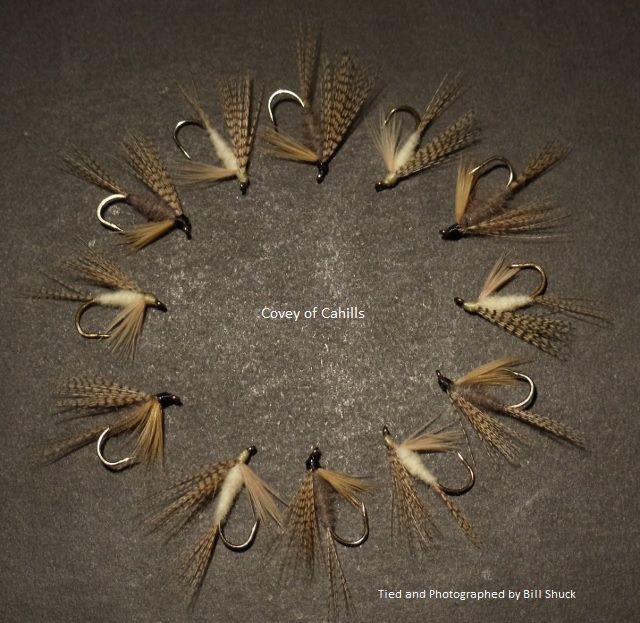Anyway, here's what he wrote on method (he also describes other methods, but this is what he lists first)
.
He then goes on to say that if there are fish below, you've basically got nothing to lose by letting it swing, even though it's not the primary purpose of the presentation... the most important methods of fishing the wet fly is the "natural drift." There are several ways to accomplish this, the most generally useful being the up-and-across cast. You take your position directly opposite the water you wish to fish, and make a cast at about a forty-five-degree angle upstream to the opposite side. As soon as the cast is completed, the tip of the rod is lowered a trifle and then kept pointed directly at the flies as they sink in the water and current carries them downstream. The line should be slack, but just on the verge of being taut. The allows the flies to be affected naturally by the current and lets leaves you in perfect command if you get a strike.
If you desire a longer drift than that obtained by the original cast, you may get this by "mending." [description of mending omitted] This also provides extra slack, and you gain some additional natural drift.
If the water below you is not likely to be occupied by fish, then the float of the flies may be terminated at an angle of forty-five below you, or just when they have started to drag across the stream. Watch and be prepared for a rise at this particular position, as it often occurs at this point.
Here's the flies actually recommends. To me, there are the true Bergman wets, the flies in the plates are more correctly Burke wets.
Black Gnat
Black Quill
Black Wooly Worm
Blue Dun and Blue Quill (down to size 20!), with a Dark Hendrickon as a subsitute
Cahill, regular or dark
Cahill, light
Coachman/Leadwing Coachman/Rio Grande King/Royal Coachman
Ginger Quill
Gold Ribbed Hare's Ear (he recommends cutting the wing off if it fails to produce)
Gray Hackle Yellow, Gray Hackle Peacock
Grizzly King (for brook trout and grayling)
Irresistible wet
McGinty
March Brown, American
Montreal
Olive Dun and Olive quill
Orange Fish Hawk (as mentioned above, really seemed to have liked this fly)
Pale Sulphur
Parmachene Belle (for brook trout only)
Professor
Queen of the Waters
Quill Gordon
Silver Doctor (only for certain conditions)
Wickham's Fancy/ Campbell's Fancy (he considered the equivalent, but preferred Campbell's. In my own experience he was wrong)
As you can see, there are very few "fancy" flies there, and those he largely recommended for brook trout only.

